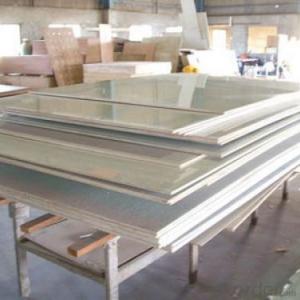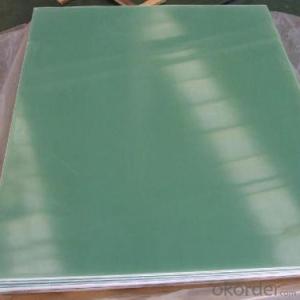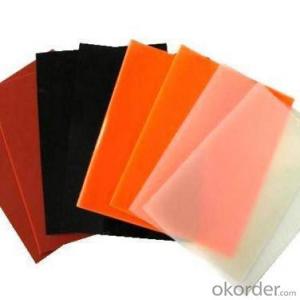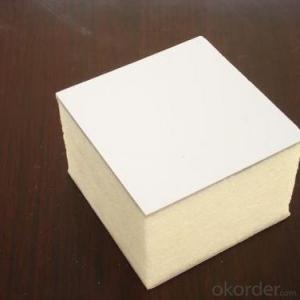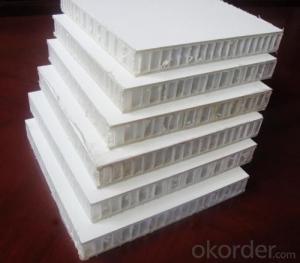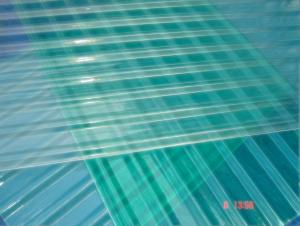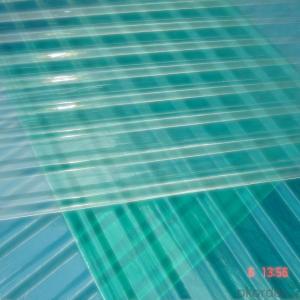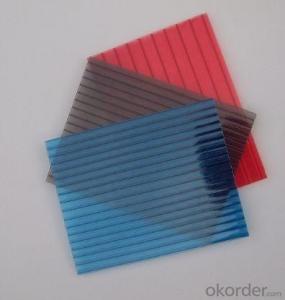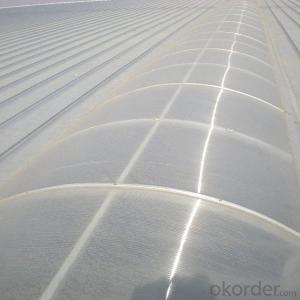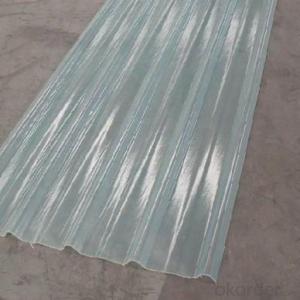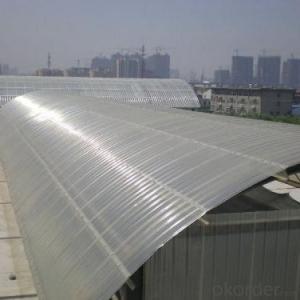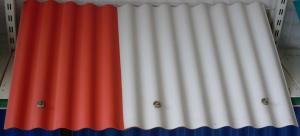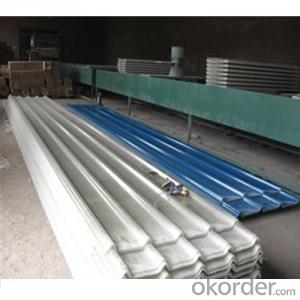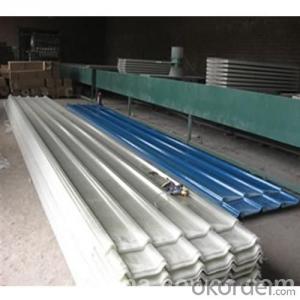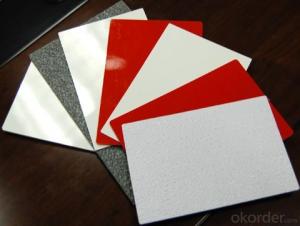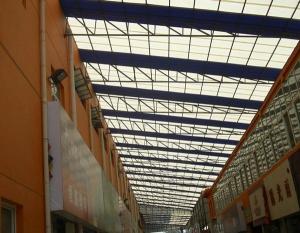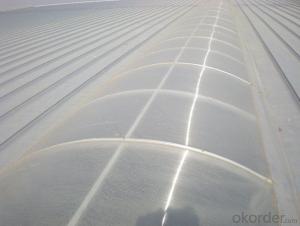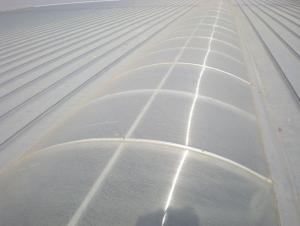Transparent Skylight GRP / FRP Roofing Sheets
- Loading Port:
- Tianjin
- Payment Terms:
- TT OR LC
- Min Order Qty:
- 300 m
- Supply Capability:
- 80000 m/month
OKorder Service Pledge
OKorder Financial Service
You Might Also Like
Item specifice
PRODUCT DESCRIPTION
FRP Roofing Sheets usually use a protecting facility in construction site,steel structured workshop and
warehouse,canopy,packing sheds,corridors,studio light awning and greenhouse etc as the excellent light
transmittance.FRP plane skylight is the more strengthened, safety, and more econimal greenhouse panel with the properties of waterproof,good light transmittance,heat insulation,strong impact resistant, withstand extreme temperature.
FEATURES
1.Light transmission
The light transmission of FRP roof Sheet is between 60-85%. Light through FRP corrugated Sheet
scatters and is mild. It will not form a light band so as to make the indoor brighter.
2.Weather resistance
The anti-aging film covering on the surface of FRP corrugated sheet improves its property of weather
resistance. The anti- ultraviolet adsorbing agent mixing in the raw materials absorbs 99.9% of ultraviolet
ray of the visible light transmitted through the FRP sheets.
3.Corrosion resistance
The products resist various acids, alkalis and peroxides, especially suitable for application in the coastal
areas and corrosive places.Temperature performance and insulation FRP roof Sheet is a kind of hot solid
high polymer materials. It is designed for normal use in temperatures - 40℃~120℃ .The coefficient of heat
conduction of FRP roof Sheet is only 1/4 of the glass.
SPECIFICATIONS
| Name: | Fibreglass Reinforced Polyester(FRP ) Sheet |
| Material: | Protective film, Unsaturated resin polyester, Fiberglass |
| Weight: | 1800g/2400g/2750g/3050g Square meter |
| Thickness: | 0.8~3.0mm |
| Length: | Customized |
| Temp: | used in -40°c to 140 °c |
| OEM: | Welcomed |
| Color: | Clear/Blue |
PICTURES
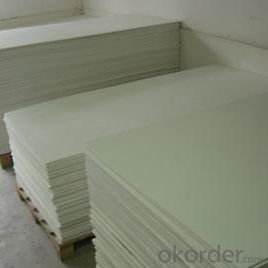

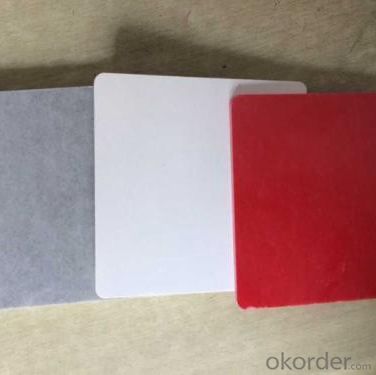
- Q:Can FRP roofing panels be used for sports arenas or stadiums?
- Yes, FRP roofing panels can be used for sports arenas or stadiums. FRP (Fiberglass Reinforced Plastic) panels are known for their durability, strength, and resistance to extreme weather conditions. These qualities make them an excellent choice for roofing in sports arenas or stadiums where protection from the elements is crucial. Additionally, FRP panels are lightweight and easy to install, making them a practical option for large-scale projects like sports arenas or stadiums.
- Q:Are FRP roofing panels suitable for museums?
- Depending on the specific requirements and conditions of the museum, FRP roofing panels may be a suitable option. Their durability is a key advantage, as they are highly resistant to UV radiation, corrosion, and impact. This makes them ideal for protecting against weather elements and ensures that they can maintain their structural integrity over time, reducing the need for frequent repairs or replacements. Another benefit of FRP roofing panels is their lightweight nature. This can be advantageous for museums with older or historic buildings that have limitations on the weight-bearing capacity of the roof. Additionally, the lightweight nature of FRP panels makes installation easier and more cost-effective. Furthermore, FRP panels provide excellent thermal insulation, which is important for museums that house delicate artifacts or artwork that can be sensitive to temperature fluctuations. They prevent heat transfer and help maintain a stable temperature inside the museum. However, it is important to carefully consider the specific needs of the museum before deciding on FRP roofing panels. Depending on the nature of the museum and its collections, additional measures may be necessary to control factors such as lighting, humidity, and air quality. In such cases, incorporating additional roofing materials or systems may be necessary to meet these requirements. In conclusion, FRP roofing panels can be a suitable choice for museums, especially if durability, lightweight construction, and thermal insulation are important considerations. However, it is crucial to evaluate the specific needs and conditions of the museum before making a final decision.
- Q:Do FRP roofing panels require a specific type of flashing?
- Yes, FRP roofing panels typically require a specific type of flashing that is compatible with the material and installation methods used for FRP roofing panels. The flashing used should be designed to provide proper waterproofing and protect against potential leaks or water damage.
- Q:Can FRP roofing panels be used for architectural applications?
- Yes, FRP (Fiberglass Reinforced Panels) roofing panels can be used for architectural applications. FRP panels offer several benefits that make them suitable for architectural use. Firstly, FRP panels are lightweight and easy to handle, making them ideal for various architectural projects. They can be easily installed and maneuvered into different shapes and sizes, allowing architects to create unique and eye-catching designs. Secondly, FRP panels are highly durable and weather-resistant. They can withstand harsh weather conditions, including extreme heat, rain, snow, and UV radiation. This durability ensures that the architectural structures made with FRP panels remain intact and visually appealing for a long time. Additionally, FRP panels are available in a wide range of colors, finishes, and textures, allowing architects to achieve their desired aesthetic appearance. Whether it is a modern, industrial, or traditional design, FRP panels can be customized to match the architectural vision. Moreover, FRP panels are cost-effective compared to other materials used in architectural applications. Their lower installation and maintenance costs make them an attractive option for architects working within a budget. Lastly, FRP panels offer excellent thermal insulation properties, which can contribute to energy efficiency in buildings. They can help in reducing heating and cooling costs, making them environment-friendly and sustainable. In conclusion, FRP roofing panels can certainly be used for architectural applications. Their lightweight nature, durability, versatility, aesthetic options, cost-effectiveness, and thermal insulation properties make them a suitable choice for architects looking for reliable and visually appealing roofing solutions.
- Q:Can FRP roofing panels be used in breweries or distilleries?
- Certainly! Fiberglass Reinforced Plastic (FRP) roofing panels are applicable for implementation within breweries or distilleries. Acknowledged for their outstanding durability and resistance to corrosion, FRP panels are apt for settings possessing elevated moisture levels and chemical exposure, such as breweries and distilleries. Furthermore, FRP panels are lightweight, simple to install, and can deliver exceptional insulation properties, which are vital for sustaining a regulated environment during brewing or distilling procedures. All in all, FRP roofing panels are a dependable and economically viable selection for these industries, furnishing enduring performance and safeguarding against diverse environmental elements.
- Q:Are FRP roofing panels compatible with different roof insulation materials?
- Yes, FRP roofing panels are compatible with different roof insulation materials. They can be used with various types of insulation such as polyisocyanurate, expanded polystyrene, or mineral wool, providing a versatile solution for different roofing systems.
- Q:Are FRP roofing panels fire-resistant?
- Yes, FRP roofing panels are fire-resistant.
- Q:Do FRP roofing panels require a specific type of insulation?
- No, FRP roofing panels do not necessarily require a specific type of insulation. The type of insulation required depends on various factors such as the climate, building design, and specific requirements of the project. However, it is generally recommended to use insulation materials that are compatible with the FRP panels and provide adequate thermal resistance. Common types of insulation used with FRP roofing panels include rigid foam insulation, fiberglass batts, and spray foam insulation. It is important to consult with a professional or refer to the manufacturer's guidelines to determine the most suitable insulation for your specific FRP roofing system.
- Q:Can FRP roofing panels be used for industrial facilities or warehouses?
- Yes, FRP roofing panels can be used for industrial facilities or warehouses. FRP (Fiberglass Reinforced Plastic) roofing panels are known for their durability, strength, and resistance to corrosion, making them suitable for industrial environments. They are lightweight, easy to install, and offer excellent protection against weather elements. Additionally, FRP panels can be customized to fit specific requirements, making them a popular choice for various industrial applications, including warehouses.
- Q:Can FRP roofing panels be installed on both residential and commercial gazebos?
- FRP roofing panels can indeed be installed on both residential and commercial gazebos. These panels, made of Fiberglass Reinforced Plastic, possess remarkable qualities such as being lightweight, durable, and highly resistant to weathering. Consequently, they are suitable for a wide range of applications, including gazebos. In addition to their exceptional UV protection, these panels are also easy to install and require minimal maintenance. Whether it is a residential or commercial gazebo, FRP roofing panels serve as a cost-effective and long-lasting solution, safeguarding the structure from the elements while allowing natural light to pass through.
1. Manufacturer Overview |
|
|---|---|
| Location | |
| Year Established | |
| Annual Output Value | |
| Main Markets | |
| Company Certifications | |
2. Manufacturer Certificates |
|
|---|---|
| a) Certification Name | |
| Range | |
| Reference | |
| Validity Period | |
3. Manufacturer Capability |
|
|---|---|
| a)Trade Capacity | |
| Nearest Port | |
| Export Percentage | |
| No.of Employees in Trade Department | |
| Language Spoken: | |
| b)Factory Information | |
| Factory Size: | |
| No. of Production Lines | |
| Contract Manufacturing | |
| Product Price Range | |
Send your message to us
Transparent Skylight GRP / FRP Roofing Sheets
- Loading Port:
- Tianjin
- Payment Terms:
- TT OR LC
- Min Order Qty:
- 300 m
- Supply Capability:
- 80000 m/month
OKorder Service Pledge
OKorder Financial Service
Similar products
New products
Hot products
Hot Searches
Related keywords
